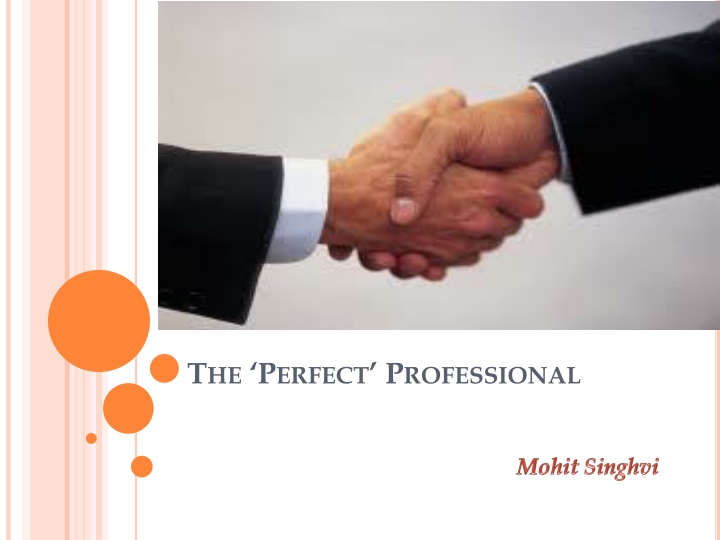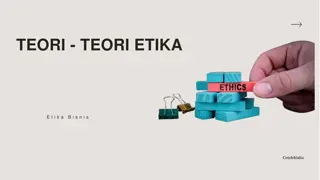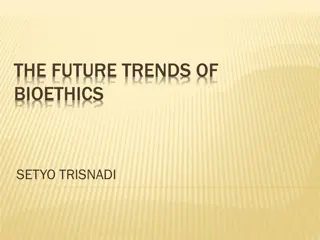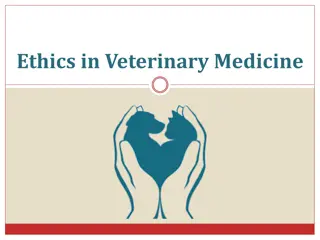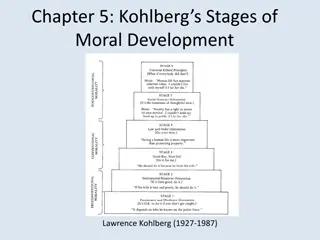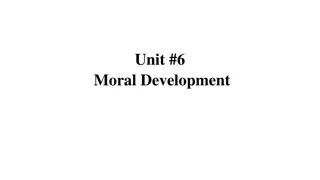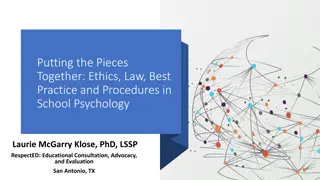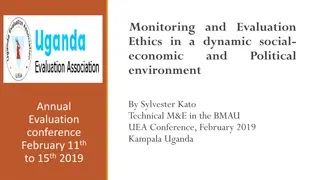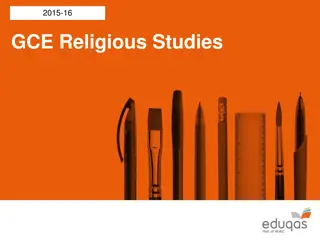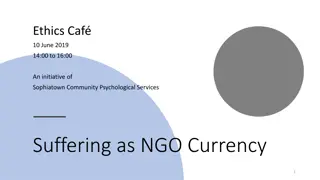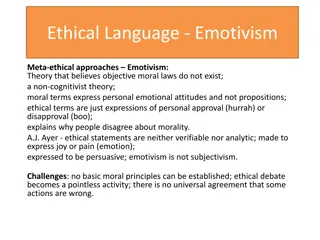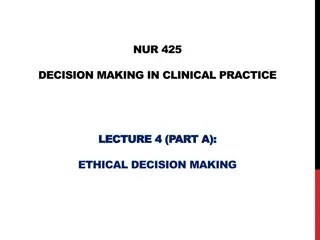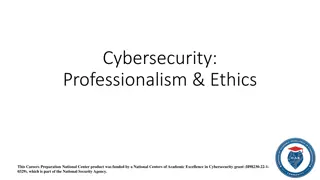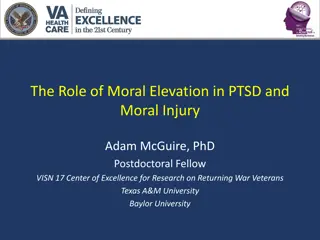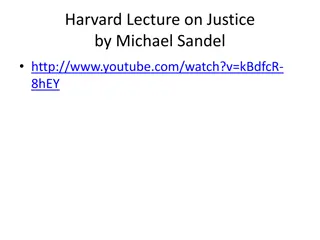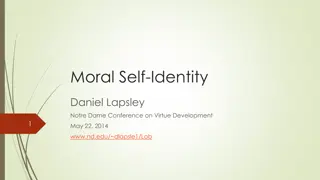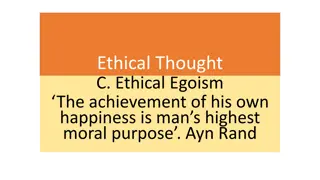Unveiling Professionalism: Ethical Dilemmas & Moral Integrity
Delve into the essence of a profession, exploring distinct attributes and ethical considerations. Navigate the case study of Dev Anand and ponder the importance of fellowship, honesty, and accountability in professional conduct.
Download Presentation

Please find below an Image/Link to download the presentation.
The content on the website is provided AS IS for your information and personal use only. It may not be sold, licensed, or shared on other websites without obtaining consent from the author.If you encounter any issues during the download, it is possible that the publisher has removed the file from their server.
You are allowed to download the files provided on this website for personal or commercial use, subject to the condition that they are used lawfully. All files are the property of their respective owners.
The content on the website is provided AS IS for your information and personal use only. It may not be sold, licensed, or shared on other websites without obtaining consent from the author.
E N D
Presentation Transcript
WHAT IS A PROFESSION?? A profession is a vocation founded upon specialized educational training, the purpose of which is to supply disinterested objective counsel and service to others, for a direct and definite compensation, wholly apart from expectation of other business gain.
DISTINCT ATTRIBUTES Autonomy Service Orientation Expertise & Knowledge Status & Prestige Institutionalized & Continuous Training
BEING PROFESSIONAL Decision Making Work Planning Professional Relentlessly
ETHICS AND MORALE Ethics are typically defined as the rules or standards governing the conduct of a person or the members of a profession. Morality recognized code, doctrine, or system of rules of what is right or wrong and to behave accordingly. No system of morality is accepted as universal. What is moral and what is not moral differs sharply from place to place, group to group, and time to time. is defined as conformance to a
CASE STUDY Dev Anand is running an NGO to help street children. He receives government grant of Rs. 2 Lacs for a project to teach the out of school children, who work at tea-stalls, do boot-polishing etc. A year passes, but Dev managed to utilize only 50,000 rupees from the grant. Despite his best efforts, he couldn t convince many poor children or their families to join his NGO s program. As per the grant rules, Dev has to return all the unspent money back to government by the end of March 31st. But his colleague suggests If we honestly return the money back, then government officials will think we are amateur, and they ll not give us any project next time!
What should Dev Anand do with the money? Because others are also doing it is never the valid justification to commit an unethical or criminal act. Two wrongs don t make a right: The shelf life of lie and deception is very low
Fellowship Honesty & Integrity Eloquence Objectivity Transparency Seven Lamps of Professionalism Obedience to Law Accountability
DUTIES OF A COMPANY SECRETARY Duty towards Director Duty towards Shareholders Duty towards Public Statutory Duties Duty towards Office and Staff
DRAFTING OF NOTICES Organizations, offices and other industries often have to communicate a lot of messages and have to record a lot of activities and proceedings for the smooth functioning of the concern. Whenever an organization convenes a meeting such as Governing Body, Executive Committee or any other official meeting, notice should be issued or circulated well in advance to the members concerned to come prepared for the meeting. Committee, Finance
POINTS TO REMEMBER Use the organization letter head. Mention the authorities to whom the copies are sent as Cc at the right/left bottom of the page Clearly state the date, time and venue of the meeting . Mention the name and designation of the issuing authority. Specify the reason (agenda) for the meeting.
AGENDA The various items of business to be transacted constitute the Agenda. In its literal sense it means, things to be done in the meeting. It is usually sent along with the notice to the participants of the meeting so as to enable them to come prepared for the discussion or question, suggest and opine on any issue so that a final clear decision can be arrived at the end of the meeting.
POINTS TO REMEMBER The First Point is always Review of the previous meeting . The other point pertain to the discussion of various issues, in the order of priority. The last point is Any other matter .
REPORT DRAFTING A report is a statement containing an assessment of a situation and data relevant thereto. It is based on one s knowledge and a systematic style of the situation. The Report may or may not contain the comments or conclusions of the writer. Preparation of a variety of statutory or non statutory report may fall within the domain of a Company Secretary.
VARIOUS TYPES OF REPORTS Auditor s Report Director s Report Inspection Report Liquidator s Report Reports to Stock Exchanges
REPORT DRAFTING Data may be marshaled in a logical sequence Plain, simple and unequivocal short sentences Divide into parts and use headings Preface explaining the nature and purpose Collection of data
RESOLUTION A meeting takes place in order to discuss and conduct the business Agenda. What is decided Resolution. as mentioned is in the known as a For example: Resolved that consent of the company be and is hereby accorded to Board of Directors of the company to present a petition for winding up of the company at Delhi.
